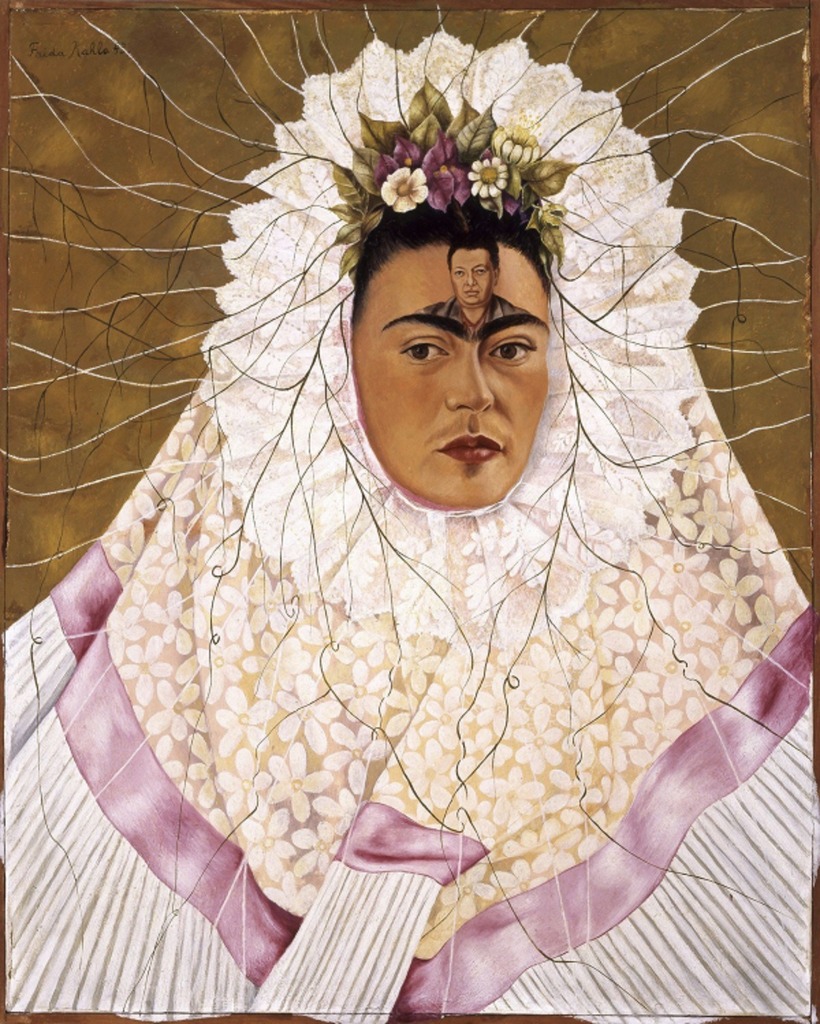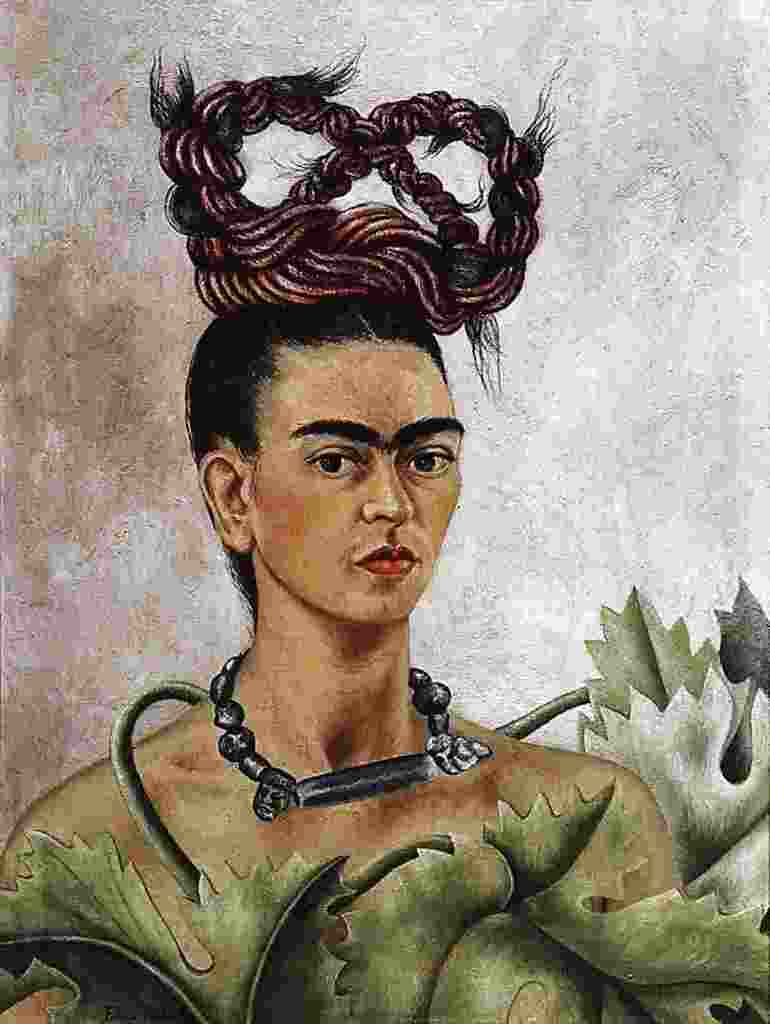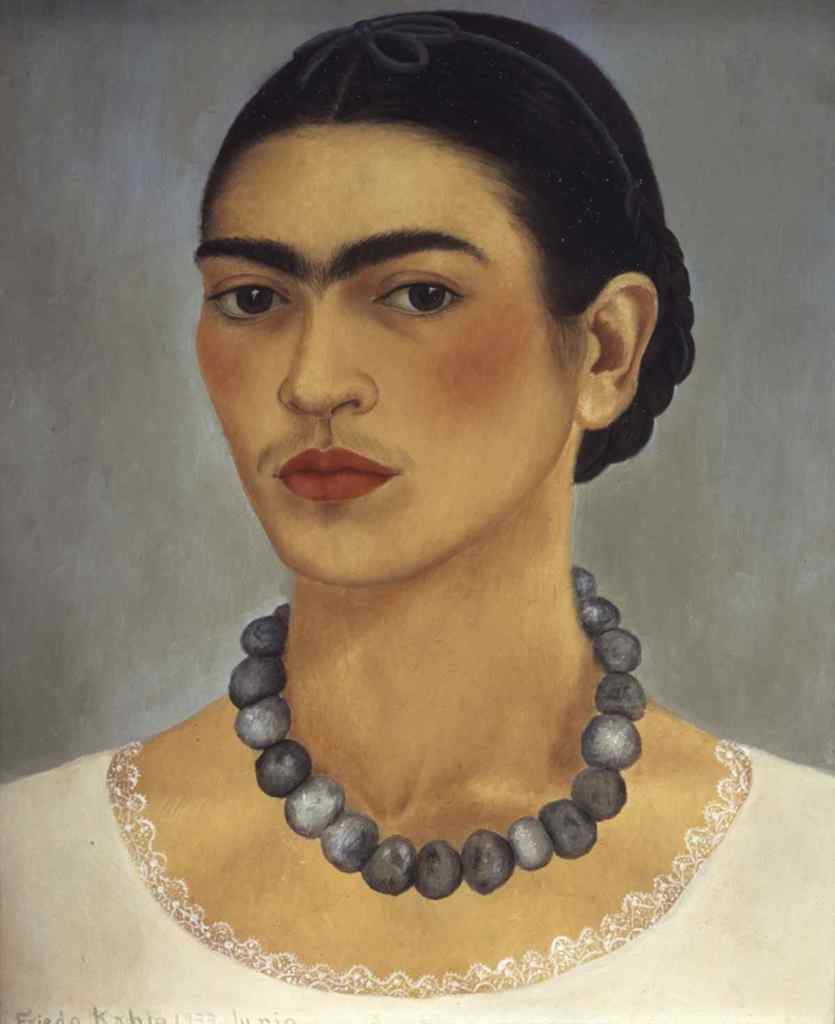ART
Frida Kahlo (with dog), a Gelatin Silver print by Lola Alvarez-Bravo taken around 1944, is part of the Brooklyn Museum Frida Kahlo exhibition titled in Frida Kahlo: Appearances Can Be Deceiving
Brooklyn Museum Frida Kahlo Show reveals a woman of style who defined herself through her ethnicity, disability, and politics
BY KAZAD
NEW YORK, NY – Frida Kahlo: Appearances Can Be Deceiving at the Brooklyn Museum allowed and insight into the unique and immediately recognizable style of the Mexican artist Frida Kahlo. The Brooklyn Museum Frida Kahlo Show is the largest U.S. exhibition in ten years devoted to the iconic painter. It was based on Frida Kahlo: Making Her Self Up, a recent show at the Victoria and Albert Museum in London.
To effectively tell the story of Frida Kahlo’s life, the curators divided the show into three main sections: Revealing Photographs, Iconic Paintings and, Authentic Artifacts. There is also a section for her drawings.
Born July 6, 1907, at Coyoacán, Mexico City, Mexico, Frida Kahlo died July 13, 1954. Kahlo lived a very rough life. From accidents to tragedies, betrayals, and medical issues, she was the paragon of a tortured soul. Nevertheless, Frida Kahlo made a name for her herself as an artist and a woman with amazing fashion sensibility. Throughout her life, Kahlo came to define herself through her ethnicity, disability, and politics, all of which were at the heart of her work.

A painter with exceptional creativity, Kahlo painted many self-portraits through her artistic career. Ten of the artist’s self-portraits are in the Brooklyn Museum Frida Kahlo Show. While some portraits document events in her life, many of them highlight her style. In Self-portrait as Tehuana 1943, for instance, Kahlo wears a white radiant starched headdress. In her hair are white purple and gold flowers accentuated her face. The portrait has a gold background. On Kahlo’s forehead, sitting on her brow is the portrait of Diego Rivera. Self-portrait as Tehuana is mimetic of the Mexican genre of “Crowned Nun” portraits, which depict nuns taking the veil and becoming betrothed to Jesus.
The Revealing photographs section of the exhibition includes rare childhood portraits taken by Frida Kahlo’s father Guillermo Kahlo and the well-known series shot by Nickolas Muray. Together, these photographs offer an intimate glimpse into Kahlo’s life.
Frida in New York

Many of the photographs in the Brooklyn Museum Frida Kahlo exhibition shows her fashion sense and style. In Frida in New York, a photograph taken by Nickolas Muray in 1946, Frida exudes radiance and confidence. In the photograph, Frida is wearing a Tehuana. The blouse she is wearing is a beautifully red and gold. Her cerulean blue skirt is accented with white lace. Frida has some silver-colored ribbon in her hair, two ornamented earrings in her ears and a red and silver necklace on her neck. In her hand is a cigarette. She sits in a chair posed as if the world belonged to her.
In addition to the paintings and photographs, the Brooklyn Museum Frida Kahlo show includes a collection of Kahlo’s clothing and other personal possessions. These personal effects had been stored in the La Casa Azul (The Blue House), where Kahlo was born and died. She also lived there with her husband, the celebrated muralist Diego Rivera. The personal effects were rediscovered and inventoried in 2004 after being locked away since Kahlo’s death, in 1954. Kahlo and Rivera stipulated that their possessions not be disclosed until 15 years after Rivera’s death.
Among Kahlo’s possessions on display are noteworthy examples of her “Tehuana clothing, contemporary and pre-Colonial jewelry, and some of the many hand-painted corsets and prosthetics used by the artist during her lifetime.” The objects allowed an insight into how “Kahlo crafted her appearance and shaped her personal and public identity to reflect her cultural heritage and political beliefs, while also addressing and incorporating her physical disabilities.”
To augment the exhibit and highlight the collecting interests of Kahlo and her husband works from the Brooklyn Museum of Art extensive holdings of Mesoamerican art are also part of this exceptional show. Further adding context to the Brooklyn Museum Frida Kahlo Show collection are works from the celebrated Jacques and Natasha Gelman Collection of 20th Century Mexican Art, including historical film and ephemera.
The Brooklyn Museum Frida Kahlo show was revealing as it provided a glimpse into the life of this celebrated artist whose fashion sensibility was integral to her art and politics. Frida Kahlo: Appearances Can Be Deceiving was organized by Catherine Morris, Sackler Senior Curator for the Elizabeth A. Sackler Center for Feminist Art, and Lisa Small, Senior Curator, European Art, Brooklyn Museum. It was in collaboration with the Banco de México Diego Rivera and Frida Kahlo Museums Trust, and The Jacques and Natasha Gelman Collection of 20th Century Mexican Art and The Vergel Foundation.
Self-Portraits in the Brooklyn Museum Frida Kahlo Show


